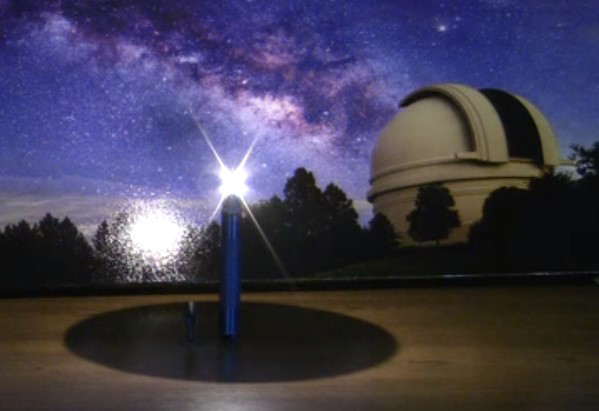Engineering a World without Light Pollution
- Lesson Plan
- Powerpoint
- Video
- Interactive
- Other Resources
- Feedback Form
You’ve heard about air and water pollution, what about light pollution? The consequences of light pollution are real, but so are the solutions. Learn to engineer a world without light pollution through this hands-on, fun, interactive activity.
Materials
- Small Maglites with light cover removed, one for each student group
- Small amount of Play-Doh, 1 for each student or group, to stick Maglite in
- Black sheet of paper, one for each student group
- A variety of classroom materials to engineer night friendly light shields
- Optional - Map of the neighborhood for each student group
- Optional - Small toy person to place under street light as a pedestrian
- Optional - Lab sheet for each student
Do Ahead
- This activity will work best if your classroom is completely darkened. You will need to cover all light from windows ahead of time.
Directions
- You will already have the room prepared, with little or no light.
- Discuss with students the harms of light pollution (wasted energy placing night-time lighting where you don’t want it, losing the ability to view the Cosmos, animal’s needs for darkness, and human health concerns). You may choose to introduce the concept of light pollution through one of the videos we have selected (see video tab).
- Discuss how communities can engineer light to go only where we want it.
- Each student group will need to have– 1 Maglite with top removed, leaving light bare, optional neighborhood map to place under street light, optional pedestrian, a small amount of Play-Doh to keep the Maglite upright, a variety of simple classroom materials to use in engineering night sky friendly lighting, and a sheet of black paper to simulate the night sky.
- Students will place the map in the center of their group, put the playdough in the center of the map, place the un-shielded Maglite into the playdough to construct their streetlight, place pedestrian if using under street light.
- Next students fill out the top of the Lab Sheet with a hypothesis for how the un-shielded light will project light onto the neighborhood and the black sheet of paper they will hold above to simulate the dark night sky. Turn off classroom lights to perform experiment. Fill out Lab Sheet with observations.
- Next students complete Lab Sheet sketches and hypotheses for how to eliminate light pollution through their own engineering. Students construct their light shields and test with the lights turned off. The goal is to have the most light on the pedestrian below the street light and the least light in the night sky (black paper held above) or in the other parts of the neighborhood.
- Editable Lab Sheet is in the download below.
| Attachment | Size |
|---|---|
| 308.34 KB | |
| 27.55 KB | |
| 27.16 KB | |
| 1.45 MB |
A great introduction to light pollution from Great Basin National Park
A good introduction to light pollution
An introduction to light-shielding
Demo for teachers on doing this activity
Have students learn more about light pollution where they live by using one of these interactive light pollution maps.
http://www.greatbasinobservatory.org/interactive-light-pollution-map
https://cires.colorado.edu/artificial-sky
Or track and record light pollution where you live! Help researchers make a global map of light pollution with Globe at Night - a citizen science project where you can submit data right from your home or school.
Here is another great video describing how to take part in the citizen science project.
Older students can check out this really cool story map from the National Park Service Natural Sounds and Night Skies division.
https://www.nps.gov/gis/storymaps/mapjournal/v2/index.html?appid=81343e5a6ea547069eadd57a7c8a4441
Read the newly introduced resolution to preserve dark night skies in Utah.
An intern from partner university SUU worked with Senator Evan Vickers to create the bill.

